Bar Harbor Cottages
Brook End
a project of
V. F. Thomas Co. - P. O. Box 84 - Hulls Cove, Maine 04644
info@vfthomas.com
(updated 8 October 2023)
Brook End was designed by William Ralph Emerson and built in 1880–1881 for General W. F. Smith. It was so named because it stood just south of the mouth of Duck Brook. Dr. and Mrs. Robert Abbe of New York purchased the home on 2 September 1899 (Hancock County Registry of Deeds book 342, pages 67–72).
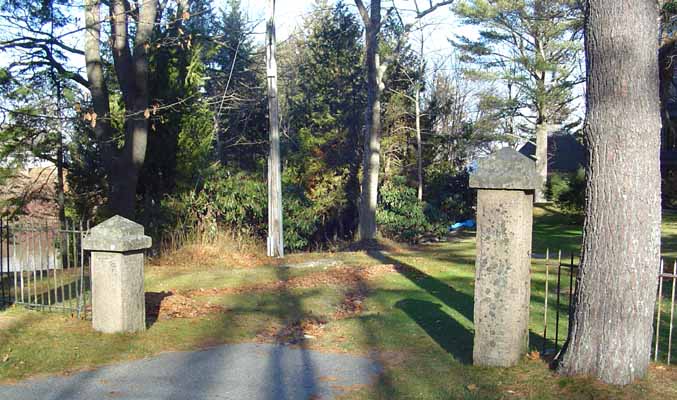
In 1900 an extensive addition was designed by Edwin H. Denby. The contractor and builder in charge was John E. Clark. James Shea was in charge of stone work, and Morris Peters was the stone cutter. The foreman of carpenters was Charles Candage, and plumbing was done by Wm. Lamb & Co. The Bar Harbor Record of 24 January 1900 was quite impressed by the addition and reported it with glowing words. "Nearly every year sees the erection of some one or more handsome and palatial residence in Bar Harbor, but rarely does one witness such a transformation of an already substantial and comfortable house as in now being undertaken with Brook-end, the summer home of Robert Abbe of New York. A number of Mr. Abbe's family are musicians of more than ordinary ability, and it was to provide a suitable place, with sympathetic surroundings, where they could gratify their love for the art, that the owner decided last summer to construct an addition and rearrange his house so as to best promote this object." (Bar Harbor Record, 24 January 1900, p. 1, col. 3)
When Dr. Abbe purchased the house, there was on the property a mill that at one time "had done a prosperous business ... [but] had long been idle, and was fast going to ruin." (Bar Harbor Record, 11 June 1902, p. 1, col. 2). In the newspaper's detailed description of the addition (see above), it was mentioned that material for one of the rooms had been "taken from the old mill which formerly stood on the brook near the road" (Bar Harbor Record, 24 January 1900, p. 1, col. 4) and further that "the removal of the old mill will permit the construction of a small lake". (Bar Harbor Record, 24 January 1900, p. 1, col. 5)
Below are the pond and a retaining wall just upstream of the pond (2 December 2009).
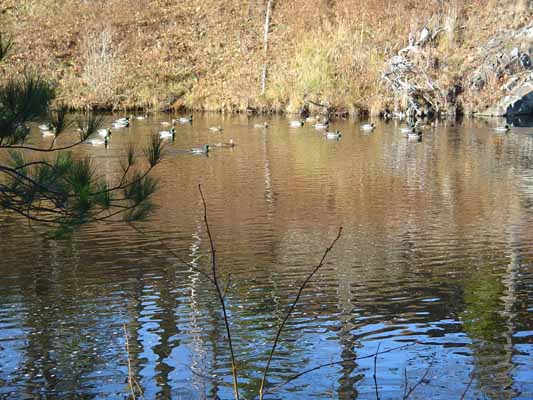
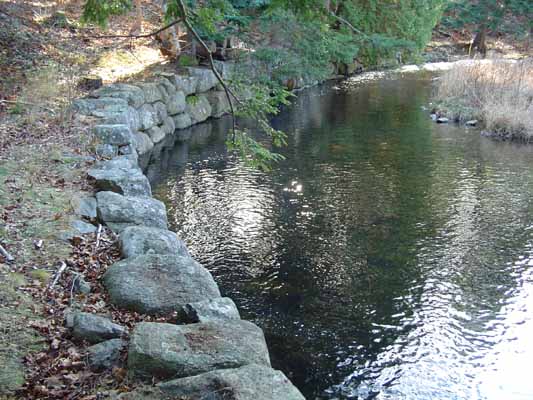
So, at the time the addition was built, "the mill buildings were torn down and a dam was built across the brook, the land on both sides of which now belong to Dr. Abbe. This dam was built of wood and was quite ornamental. But though it served to show what could be done it was not durable enough to withstand the strain that must necessarily be put upon it. As a result of one year's experience it was decided that a second dam should be built this time of stone. And there is where an interesting problem presented itself. In order to support the heavy masonry necessary to make the dam perfectly secure a foundation must be laid far below the surface of the stream. This was an engineering feat of no small magnitude, for in undertaking it one had to contend with the water of the brook on one side and the tide of the bay on the other side. Many who had investigated the matter said such a dam could not be built. But where there is a will there generally is a way. Dr. Abbe had the will—and the money—and in the person of Mr. P. W. Blanchfield he found the way. ... With plans submitted by Miss Beatrix Jones [later Beatrix Farrand] Mr. Blanchfield commenced work of construction ... . Work was continued all through the winter and the dam is now complete and a pretty sheet of clear water takes the place of the old mill. The dam is 112 feet long and 7 feet, 6 inches wide on top. The foundation is laid 19 feet below the bed of the brook in the center and rests on the solid ledge. The dam is fourteen feet wide at the base and is constructed of solid masonry, the two sides being faced with granite. The water over the dam has a fall of seven feet." (Bar Harbor Record, 11 June 1902, p. 1, col. 2.)
The dam on 24 April 2010:
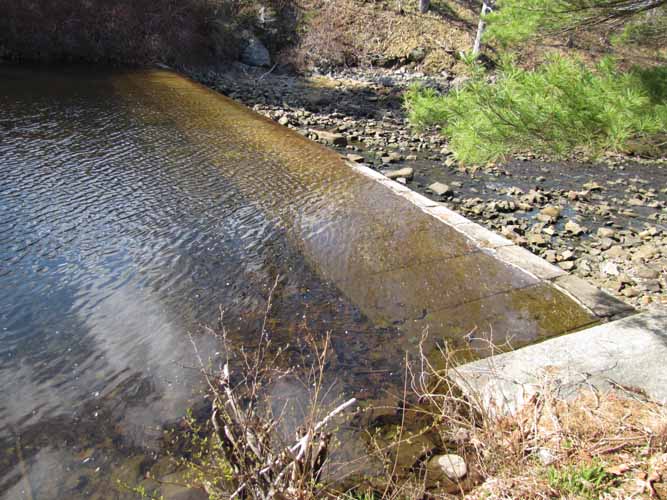
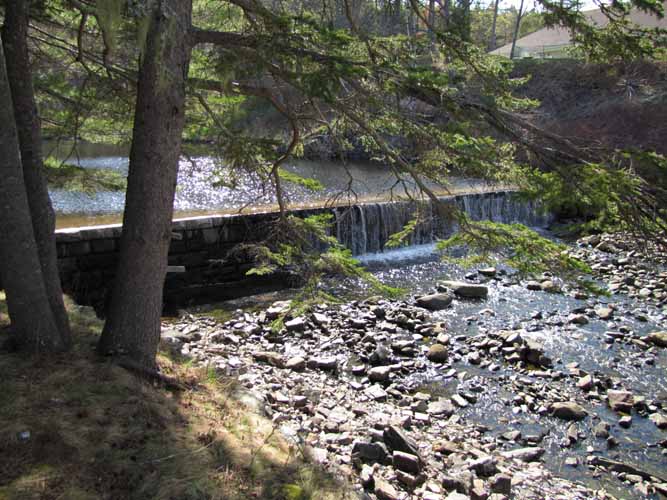
Beside the pond are several benches (one pictured below) and the remains of a bird bath.
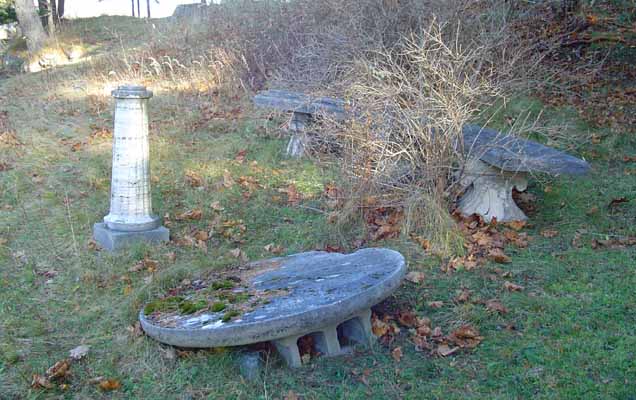
After Dr. Abbe's death on 7 March 1928 the property was sold to A. Atwater Kent (Hancock County Registry of Deeds book 621, pages 486–487; 18 June 1928). The Abbe Museum, which bears Dr. Abbe's name, was dedicated on 14 August 1928, 5 months and 1 week after his death.
Brook End was torn down around 1963.





